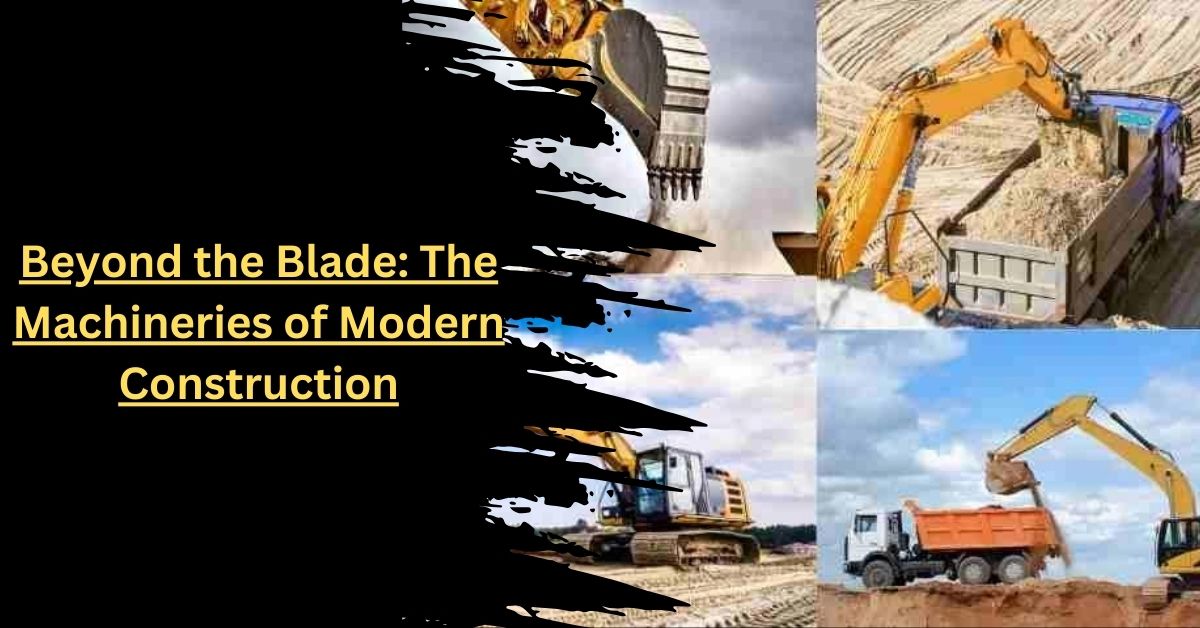Beyond the Blade: The Machineries of Modern Construction
Advanced heavy machinery plays a crucial role in the expansive realm of engineering and construction, where innovation and dedication lead the charge towards progress.
So, this post talks about such equipment’s diverse applications and significant impacts, highlighting how it reshapes architectural achievements and environmental landscapes.
Amidst this narrative, special attention is drawn to a particular powerhouse, the d11 dozer, showcasing its critical contributions to transforming the modern world.
Revolutionising Construction: A Leap Forward in Capability
The advent of this machinery has marked a significant milestone in the evolution of construction and demolition equipment. It represents a harmonious blend of raw power, unmatched efficiency, and cutting-edge technology.
This equipment’s introduction has accelerated the pace at which massive infrastructural projects are undertaken, setting new benchmarks for what could be accomplished.
Building the Unbuildable: Pioneering Modern Marvels
Such machinery’s sheer capacity and efficiency have become indispensable in executing visionary engineering projects. It has laid the groundwork for constructing towering skyscrapers, sprawling bridges, and extensive underground tunnels, each a marvel in its own right.
Moving and managing vast quantities of earth and materials with unprecedented precision has redefined project timelines and economic efficiencies. This enables the realisation of ambitious projects with improved speed and reduced costs.
A Steward of the Earth: Conservation and Land Rehabilitation
Far beyond its application in construction, the machine’s role extends into the critical area of environmental conservation and land management. This equipment is pivotal in land reclamation efforts, controlling forest fires, and restoring natural habitats.
Its contribution to ecological projects highlights its adaptability and importance in preserving natural landscapes. This showcases a commitment to balancing development with environmental stewardship.
The Engine of Innovation: Pushing Boundaries for a Sustainable Future
Reflecting the industry’s drive towards more sustainable and efficient construction practices, continuous improvements in the design and functionality of this equipment have been paramount. Advances in reducing emissions, enhancing fuel efficiency, and bolstering operator safety demonstrate a concerted effort to mitigate the environmental impact of heavy machinery.
These innovations extend such equipment’s operational life and reliability and align with the broader goals of sustainable development and environmental protection.
The Foundation of Infrastructure: Enabling Growth and Connectivity
In the sphere of infrastructure development, this machinery’s unmatched capabilities underscore its crucial role. Its involvement in creating and maintaining roads, bridges, and tunnels is a testament to its indispensability in the fabric of modern society.
Ensuring projects are completed more efficiently and to higher standards supports economic growth and enhances the connectivity between communities, thereby improving the quality of life for people around the globe.
Navigating Complex Terrains: Mastery Over the Elements
A notable feature that sets this machinery apart is its unparalleled capability to navigate and modify the most challenging terrains. The robust design and advanced technology enable it to tackle diverse environmental conditions, from the arid deserts to the frozen tundras.
This adaptability enhances its effectiveness in traditional construction roles and elevates utility in projects requiring extreme precision and environmental sensitivity.
It may be used to sculpt landscapes for flood prevention or to carve pathways through previously inaccessible areas. In any case, its ability to master the elements furthers its indispensable role in pioneering construction projects and critical environmental interventions.
Reflecting on its journey and enduring impact, the d11 dozer is pivotal in developing modern infrastructure and environmental management. It plays a critical role in transforming architectural concepts into tangible realities and advancing sustainable practices in land management.
Looking ahead, the evolution and adaptable application of such technology is critical to driving innovation in both the construction industry and environmental conservation efforts. This marks its continued significance in shaping a sustainable future.




